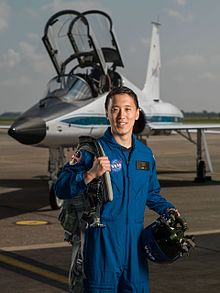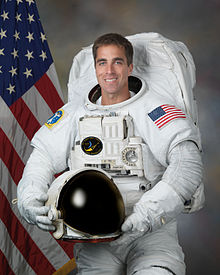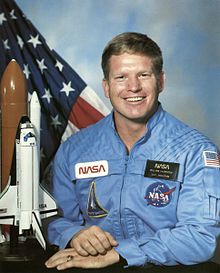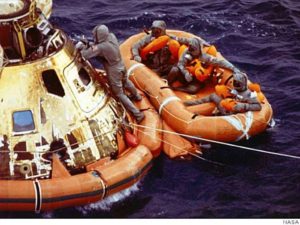SEALs in Space: NASA and the Next Generation of Astronauts
[Originally published at OpsLens.com]

This month, NASA’s group of 12 candidates begin their two-year training program to become the nation’s next generation of astronauts. Among them is Jonny Kim, a physician and former special operator with the Navy SEALs.
Kim enlisted in the Navy in 2002 and entered Naval Special Warfare Training Center in Coronado, Calif. After graduation, he was assigned to SEAL Team Three in San Diego, where he served as a combat medic, sniper, navigator, and point man on 100 combat missions during his two tours in the Middle East. Kim was awarded both the Silver Star and the Bronze Star with the Combat “V” device for valor as well as the Navy and Marine Corps Commendation Medal with the Combat “V.”
Kim’s astronaut training focuses on “International Space Station systems, robotics, Russian language, flying T-38 training jets, and spacewalk training,” Brandi Dean of NASA’s public affairs office informs OpsLens.
“In addition, they’ll have activities that build what we call expeditionary skills – things like leadership, followership, team care, and communication,” Dean adds.
All traits Kim undoubtedly excelled at as a member of Naval Special Warfare.
Once he completes his two-year training program, Kim will be considered a “full astronaut” and is eligible for mission assignment, with the possibly of a trip to Mars not yet out of the question.
However, Kim will not be the first, or even the second SEAL that NASA found to have “the right stuff.”

Two weeks after the 9/11 attacks, Chris Cassidy deployed to Afghanistan, one of the officer’s two combat deployments to Southwest Asia. The top graduate of Basic Underwater Demolition/SEAL (BUD/S) Class 192 earned two Bronze Stars with the Combat “V” during his ten-year tenure with the SEALs, and the platoon commander served in numerous assignments in the special warfare community, including two tours in the Mediterranean and Persian Gulf. Cassidy’s force was awarded a Presidential Unit Citation for a nine-day operation clearing a cave complex on the Afghanistan-Pakistan border in the opening days of Operation “Enduring Freedom.”
Cassidy was selected to NASA’s astronaut training program in 2004, and after graduation would perform two missions in space: one on the Space Shuttle and another joint U.S.-Russian mission on the Soyuz space station. In 2015, NASA selected Cassidy to be its “Chief Astronaut,” overseeing crew assignments and advising the administrator on training and operations.

But the title of first frogman in space belongs to William Shepherd. After graduating BUD/S in 1972, Shepherd served with SEAL Teams One and Two, as well as Underwater Demolition Team Eleven and Special Boat Unit Twenty.
In 1984, Shepherd became the first non-aviator ever selected for astronaut school. He participated in recovery operations for the ill-fated Space Shuttle Challenger in 1986 before blasting off to space on three shuttle missions. And in 1999, he was selected to command the first crew of the International Space Station. He is one of 28 astronauts awarded the Congressional Space Medal of Honor – NASA’s highest award.
Prior to sending SEALs into space, NASA utilized the elite sailors to perform the daunting task of recovering space capsules once they splashed down in the ocean.
Once the Apollo 11 command module landed in the Pacific Ocean after astronauts Neil Armstrong and Buzz Aldrin became the first humans to walk on the moon, “Sea King” helicopters from the aircraft carrier USS Hornet carried a handpicked team of four SEALs, wearing special isolation suits to protect them from possible lunar pathogens, to wrestle the “bucking bronco” from the ocean.

Wes Chesser, Clancy Hatleberg, John Wolfram, and Mike Mallory jumped into the water, fighting 12-ft. waves and 28-mph winds to perform the daunting task of attaching a 200-lb. inflatable raft to the 12,000-lb. Apollo capsule as it pitched up and down with the waves to prevent the astronauts and their capsule from sinking to the bottom.
SEAL stands for Sea, Air, and Land – the various environments in which our nation’s elite naval commandos operate. The “men with green faces” have come a long way from the jungles of Vietnam and the enemy-held beaches of the Pacific where they cut their teeth, and can add space to their résumé. We wish Dr. Kim the best as he conducts his training and adds to the already rich history of SEALs in space.